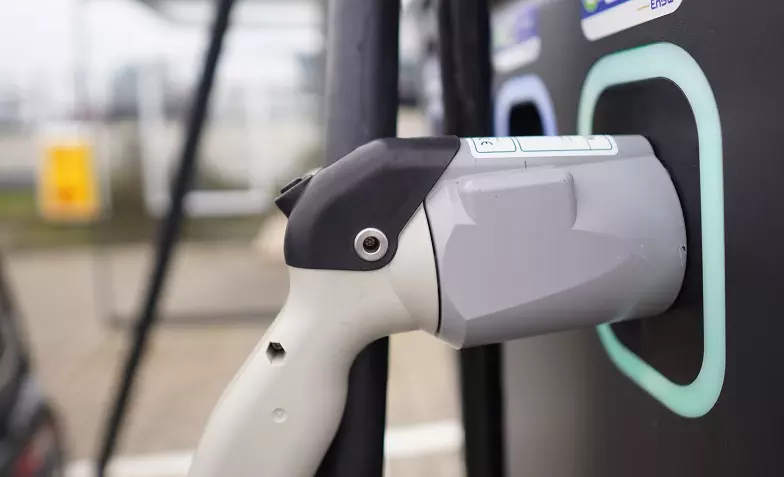The Hyundai Ioniq 5 is known not only for its radical pixelated 80s-ish retro design, it’s also known for having one of the highest DC fast charging capability at 800v, together with the Porsche Taycan and Kia EV6. But wait, let’s put a hard brake on this, I want to stop you right there. 800V itself was misleading, it is not a charging speed.
A revisit to school’s science class

For science-educated person (physics was my favourite subject), looking at this 800V charging capability as marketed by car manufacturers like Hyundai makes totally zero sense. Voltage itself has no meaning in the context of charging. Because the current in conjunction with the Voltage is what makes the electrons flow from one end to another. Voltage itself does nothing. It’s a potential energy. Thus, no charging can happen. Confusing?
Telling a buyer that 800V as a charging speed is like me telling my wife that I am earning a $800k salary per month. But when my wife asked to show her the money, all I can tell her was; it was only my potential earning, I don’t have that money. Imagine where would I sleep after that.
Anyway, let’s get down to the explanation. This article is not targeted towards science geeks. So i’m gonna use a layman’s analogy. Imagine a U-shaped tube filled with water, let’s annotate each end with A and B. To move the water from A to B would require a differential of potential from A to B. That can be something like gravity. If you lift up A, this would create a differential of gravity from A to B. Thus, the water flows from A to B. The amount of water flow is also determined by the diameter of the tube. The bigger the tube, the bigger the flow of water. This flow, is called a flow of current.
In this layman’s analogy, lifting up A would create and store a potential energy over the other end of B. Creating what we called in electronics as Voltage. The movement of water from A to B is what we called Amperage.
To put it simply :
| Voltage and Amperage | |
|---|---|
| Voltage | The potential energy in (Volts) to push electrons over the wire |
| Amperage | The amount of electrons that could be pushed over the differential between the + and - by the potential energy from the Voltage |
There is another factor called the resistor, the symbol used is Ω, it’s called Ohm’s. I wouldn’t touch on that as this would confuse you even more. Just remember that when you top up your EV in a DC fast charger, you would see fat wires connecting that to your car. Resistance played a role in that.
Why the misinformation and confusions?

Simple; marketing gimmicks + not paying attention in school, and rampant spreading of misinformation on social media. Trump calls it, fake news. This confusion and misunderstanding spans across all walks of lives. Even from the admins from some EV groups that you could find social media like FB, which to my experience, made countless misleading information to thousands of his followers. It makes matter worse.
One example would be one made by the founder of a Malaysia Facebook EV group, let me call him Dato Shaq for anonymity sake, in one of the comments in the Facebook page that he manages, he said something like this in one of the posts; “the Hyundai Ioniq 5 is capable of charging at 800V, even without a 800V DC fast charger like the one in Shell Malaysia (DC 400V 180kWh output). There will be an ‘inverter’ to convert 400V to 800V in the car. Therefore, in comparison to some others native-400V EV cars like the Volvo XC40 Recharge P8, the Ioniq 5 could still charge at a faster rate because it will be converted to 800V!”
Well, the basics of physics. Energy cannot be magically appear out of nowhere. It cannot be destroyed nor created out of nothing. Energy is converted from one to another, from kinetic to potential energy when you moved to an elevated area, from a separation of atoms to heat and to kinetic, then to electricity; you knew it as nuclear reactor. What Dato Shaq said was amount to magic. Which, as i’m aware of, only Doctor Strange and Harry Potter have that ability to do so.
So the above is a sample of misleading widespread of information. That was only the tip of the iceberg. But anyway, let’s do some facts checking:
- for a 800V-supported cars like the Porsche Taycan and Hyundai Ioniq 5. Charging at a widely available DC charger at 400V 180kWh or 150kWh doesn’t give you extra power.
- In fact, the Porsche Taycan could only charge at 75kWh due to the absence of an ‘inverter’ to convert to 800V unlike what the Ioniq 5 has. It could only charge at half of its capability. 150kWh becomes 75kWh. 180kWh becomes 90kWh. Unless you opt for an inverter that would cost you an additional hundreds.
- By the way, calling it inverter is misleading. It was done for marketing purpose. The actual tech is called boost converter. But I’ll call it inverter for layman’s sake.
- The Hyundai Ioniq 5 cleverly engineered in a way to include an inverter at the motor. So when you plugged in a DC fast charger like the one widely available from Shell, with specifications of 400V 180kWh, the charging goes to the inverter at the motor to convert the 400V to 800V, then to the battery.
- Say if a 150kWh 400V charger was plugged into a Hyundai Ioniq 5. It will be converted to a 800V 150kWh internally in the car, by having the Amperage lowered down. Having a 800V 150kWh internal power doesn’t mean it has higher power than a 400V 150kWh. This is what most got misunderstood from. Refer to So, how fast will my Hyundai Ioniq 5 charge anyway? to have a grasp of the equation between Volt, Amp and Watt.
- Human technology have not achieved 100% efficiency in conversion of DC to DC. Under light load, in an ideal and optimum conditions, at most, it goes up to 95% of conversion.
- Therefore, a hypothetical of 5% best case, would be lost for 180kWh 400V DC fast charging for the Hyundai Ioniq 5 and Kia EV6.
Read more here to understand how DC to DC converter works. Warning, it’s not for the faint hearted.
To summarize this section. 800V was marketed deliberately. A big number is attractive. 800V looks and sounds better than 350 kilowatts.
Now back to business…
So, how fast will my Hyundai Ioniq 5 charge anyway?

Given the knowledge you have gained from A revisit to school’s science class. The formula to calculate a charging speed can be summarize as this; the amount of electrons from the charging station you need to push over the wire into your electrical vehicle’s battery. The total amount of electrons pushed, is called an energy. In physics, it’s called Wattage. Simple isn’t it :
Volt X Amp = Watt
Wattage is the number you need to look at for the charging speed and capability. Voltage alone, makes no sense.
By playing with this formula, let’s take a 400V 150kWh DC fast charger.
400V X 375A = 150kWh
Once plugged into an Ioniq 5.
800V X 187.5A = 150kWh
You can’t create extra energy just by jacking up to 800V from the equation.
And so in order to get a charging speed. You need to factor in the time in the equation as well. The most common kilowatt hour is the metric for a charging speed. It’s simplified as kWh. This is what you see everyday in both the electrical vehicle battery capacity and the charger specifications.
From Hyundai and Kia’s statement. You have to be at lower than 20% to be able to get the fastest charging speed. So to enjoy the hypothetical of 10-80% charge in 18minutes as what Hyundai claimed. Plus, you need to find a 350kWh DC fast charger. Which to my knowledge, available in very limited stations from Ionity and Tritium in the States.
In most cases, you only have the common DC fast charger at 150kWh from Ionity and 180kWh from Shell at your disposal.
So let’s do some calculations on your brand new Ioniq 5 plugged in to a 180kWh Ionity/Shell DC fast charging station, given the lost of conversion as mentioned here. The 180kWh will become:
180kWh - (5%) = 171kWh
Or for a 150kWh charger
150kWh - (5%) = 142.5kWh
So in essence, for Hyundai Ioniq 5 and Kia EV6 users. These numbers on top here are what you could expect to get from the common DC fast chargers, rated at their respective speed via 400 Voltage. And do note, these are the ideal numbers. DC to DC conversion don’t always give you ideal conditions. Setup like temperature, the setup of the wiring would impact of such conversion. Do read more here if you’re interested to know how DC to DC works.
At such speed, do expect somewhere around 30-60minutes of charging duration from 10% to 80%. It wouldn’t be faster than others EV charging capability unlike what Dato Shaq has mentioned. It will be theoretically, slower. Do also take note that temperature of the battery being too cold and too hot would slow down the charging speed.
Also, do not expect 10-80% in 18minutes that Hyundai has misled most of their users in their marketing flyer. As that could only happen in ideal situation where you have a 350kWh charger at your disposal. Even at such ideal situation, none as I know of could achieve a 10-80% in 18minutes in real world situation.
Speaking of which, I do suggest you to have a look at this video of his experience in charging his Ioniq 5 from 4.5% state of charge (SOC) to 100% SOC.
Summary from the video, not very promising even via a 350kWh DC super fast charger.
What do we learn here today?
Knowledge is power, marketing and corporate greed is power, don’t trust blindly of social media’s expert/admin, and do study well in school.
I hope by now, after reading this article, the charging capability number of 800V given by Hyundai makes no sense to you. And you have a better grasp and the expectations from DC fast charging available to you. Do also follow some Youtubers like Bjorn, he made countless videos about real world range and charging capabilities of a wide range of EV’s.
Lastly, do not buy an EV for the benchmark of any sort that the car manufacturer promised to you; it could be charging speed, acceleration, wear/tear …etc. Buy a car that suit your needs, not from the manufacturer’s benchmark made to suit yours.
